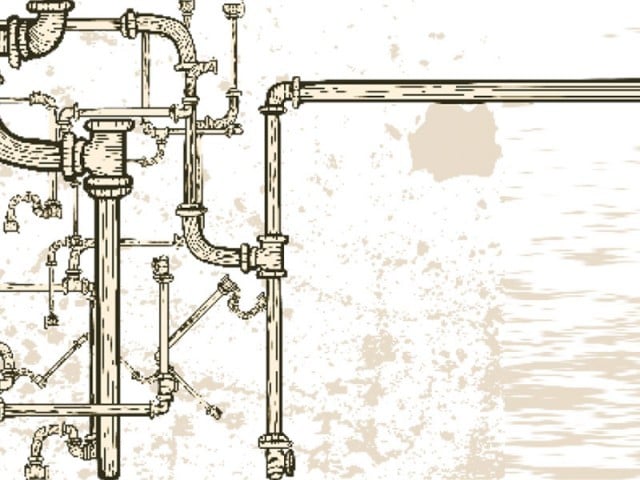
To control damage during floods and deluge, Water and Sanitation Services Peshawar is planning to replace the old and worn out sewerage lines with a system in which pipes are made with a material that does not easily corrode.
A meeting of WSSP Board of Directors was held in which the authority’s chairman Khalid Masud said a 50-year plan should be made and projects should be designed in accordance with the changing climate and needs.
The spiral piping system that WSSP is planning to install would help overcome sanitation issues and protect locals during harsh climates. The new pipes would be made with unplasticised polyvinyl chloride and hence not corrode easily.
Under the ground
A detailed report was presented during the meeting and WSSP CEO Muhammad Naeem was informed that the spiral piping system is used in many countries, including Iraq, Hungary, Albania and Bulgaria. It is a cost-effective measure in which pipes carry more water than the concrete ones can.
It was also decided that the uPVC pipes would be compared with the ones that are present in the system. A report would be prepared on the new system and thereafter a decision would be taken based on the rules laid by Khyber-Pakhtunkhwa Public Procurement Regulatory Authority.
Since measures were discussed to improve the sewerage system and drinking water facilities in the city, it was also agreed that relevant departments would consult WSSP before launching any development project.
Naeem said a master plan has been prepared for three major areas, including drinking water, sanitation and solid waste management. He added that the installation of uPVC would not be rushed as they first need to be evaluated.
Earlier, a representative of the manufacturing firm, Aftab Jillani apprised the participants about the production of pipe on-site, its storage, transportation and specifications. He said that the firm has completed three projects in Pakistan. The uPVC pipes were used in drains, culverts, highways and even hydropower projects.
A new drainage system is needed more so because the old one was also the reason behind destruction during the Budhni nullah floods; had there been an efficient system under the ground, water would have directly flown into the canals instead.
Published in The Express Tribune, September 6th, 2015.











COMMENTS
Comments are moderated and generally will be posted if they are on-topic and not abusive.
For more information, please see our Comments FAQ